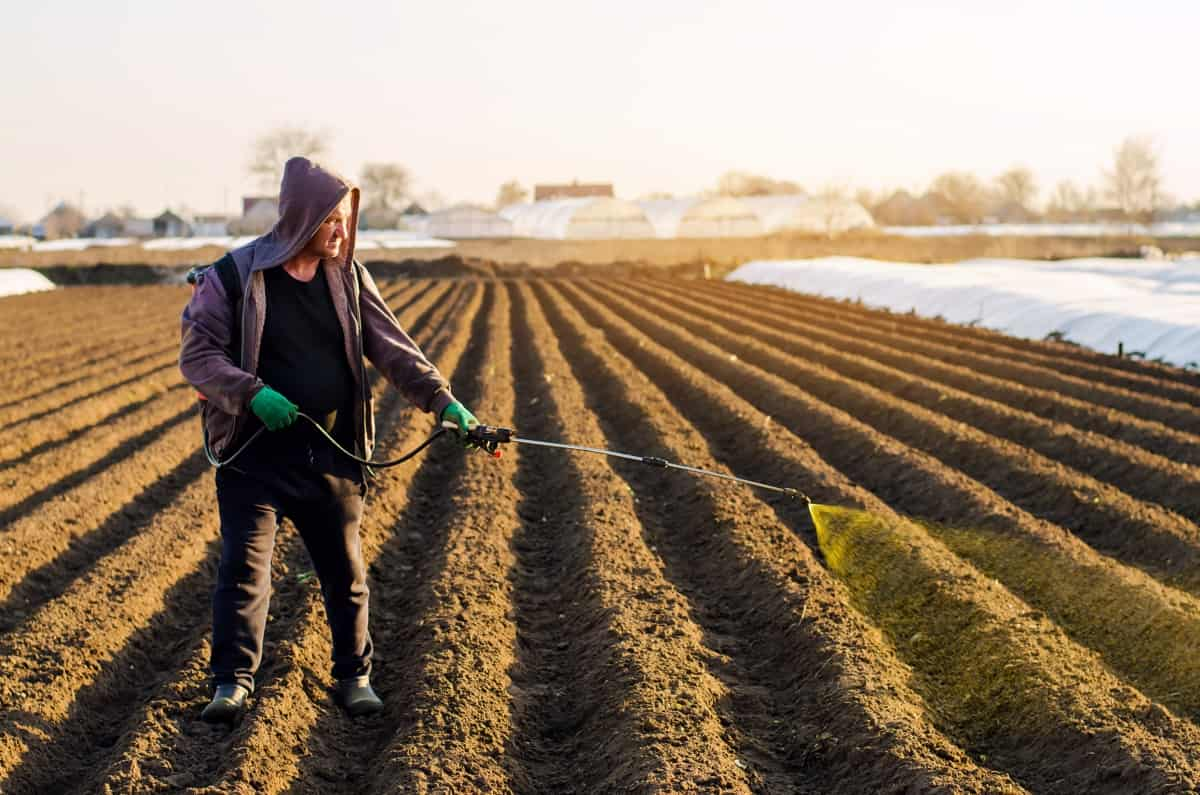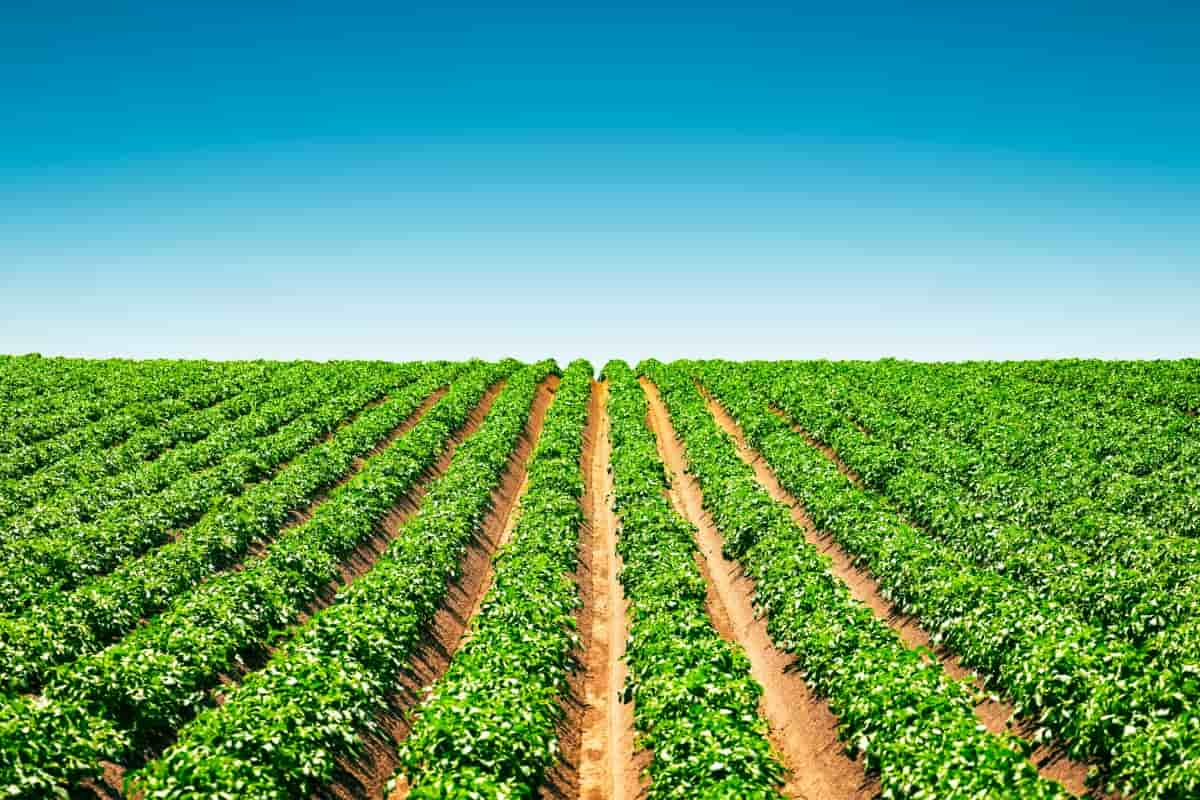Growing potatoes is no easy feat. To achieve crop growth and productivity, careful planning, smart resource management, and understanding key influencing factors are essential. One of the significant challenges in potato farming is weed control. Weeds compete with potato plants for nutrients, water, and sunlight and can also be a host for diseases and pests. Here we focus on the major weeds of potatoes, their impact on the crop, and the various methods and chemicals used to control them.

Weed Control in Potato
Understanding Major Weeds of Potato
The first step in controlling weeds in a potato field is understanding what you’re dealing with. Potatoes face many weed species that can seriously hamper their growth and yield. Among the most notorious are the annual weeds like crabgrass, pigweed, lambsquarters, and ragweed. They germinate, grow, produce seeds, and die within a single growing season, often leading to a rapid infestation in the potato field.
Perennial weeds like quackgrass, bindweed, and thistles, on the other hand, are even more challenging to deal with. Their extensive root systems allow them to survive and reproduce year after year, making them particularly tough to eliminate. These weeds all present a significant threat to potato crops. They compete for resources and can significantly reduce yields if left unchecked.
Moreover, they can also harbor pests and diseases, further exacerbating the problem. The problem is how quickly they can spread across potato fields. This often results in a blanket-like ground cover that impedes sunlight from reaching potato plants, limiting their photosynthetic activity. This, in turn, weakens the plants and reduces overall yield. In addition, weeds can also complicate the harvesting process by entangling with potato plants, making it harder to dig up tubers without damaging them.
Chemicals Used in Weed Control
Chemical weed control has long been a staple in the arsenal of potato growers. Chemicals must be chosen and used carefully, considering their effects on the environment, non-target organisms, and human health. Pre-emergent herbicides are applied before weeds grow, killing their seeds. Examples are trifluralin, pendimethalin, and metolachlor.
Post-emergent herbicides are used after weeds have already appeared. They are usually used in cases where pre-emergent herbicides weren’t sufficient to control the weed population or when the nature of the weed species necessitates their use. Glyphosate is a common post-emergent herbicide used in potato fields, although it should be applied with caution due to its non-selective nature.
In case you missed it: Best Soil Composition for Potato Cultivation

Contact herbicides are another category of chemicals used to control weeds in potatoes. These work by destroying only the plant tissue they come in contact with. They are effective for controlling annual weeds and young, tender perennials. Examples include paraquat and diquat. On the other hand, systemic herbicides, such as 2,4-D and MCPA, are absorbed and translocated throughout the weed, killing the entire plant and making them effective against established perennials.
Strategies for Weed Control in Potato Fields
Although the use of chemicals plays a significant role in weed control, it should not be the sole approach. Integrating chemical control with other strategies can result in a more comprehensive and sustainable weed management plan. One of the key strategies is crop rotation. By changing the type of crop grown in a field each season, farmers can disrupt the life cycle of weeds that prefer certain crops.
Field sanitation is another crucial practice. Ensuring the field is clear of weeds before planting and cleaning equipment to prevent the spread of weed seeds between fields can go a long way in reducing weed populations. Cultivation practices, such as plowing and harrowing, can also help control weeds by disturbing their growth and uprooting them.
Cover crops can also be a beneficial strategy for weed control. By providing a dense canopy over the soil, cover crops can effectively outcompete weeds for sunlight, water, and nutrients, thereby inhibiting their growth. They can also improve soil health and fertility by adding organic matter and preventing erosion. However, the choice of cover crop should be carefully considered to ensure it does not become a weed or host pests and diseases harmful to potatoes.
Another useful strategy is the use of mulches. Organic mulches, like straw or compost, can suppress weed growth by blocking sunlight and adding nutrients to the soil as they decompose. Synthetic mulches, such as plastic films, can provide a physical barrier that prevents weed emergence. In addition, they can increase soil temperature, which can boost potato growth and yield.
The timing of planting and harvesting can also influence weed control. Planting potatoes early in the season, before many weeds have had a chance to germinate, can give the crop a head start, allowing it to outcompete weeds. Similarly, harvesting as soon as the crop matures can prevent weeds from setting seeds and proliferating.
Monitoring and Evaluation
Regular monitoring and evaluation is one of the most important yet often overlooked aspects of weed control. A consistent and comprehensive surveillance system enables farmers to promptly identify and respond to weed issues. It involves regular field inspections to identify the species and density of weeds present and the effectiveness of the control measures implemented.
In case you missed it: Pruning and Staking Techniques for Indeterminate Potato Varieties

Early detection allows for adjusting methods and approaches if a particular strategy isn’t working as well as expected. Furthermore, continuous evaluation of weed control strategies helps make informed decisions about future practices and investments in weed management. Consequently, it supports sustainable farming by preventing unnecessary chemical usage and preserving soil health and biodiversity.
Conclusion
While the major weeds of potatoes can pose significant challenges to potato growers, they are not insurmountable. By understanding the weeds they are dealing with and the various control methods available, including the careful use of specific chemicals, farmers can effectively manage these unwanted plants.
Furthermore, growers can build a more comprehensive and sustainable weed control plan by integrating these chemical controls with other strategies, such as crop rotation, field sanitation, cultivation practices, cover crops, mulching, and adjusting planting and harvesting times. The key is approaching weed control as a multi-faceted problem requiring a solution. With careful planning and management, a weed-free potato field is within reach.
- Feed Your Flock for Less: Top 10 Tips to Save on Chicken Feed
- Ultimate Guide to Ossabaw Island Hog: Breeding, Raising, Diet, and Care
- Hatching Answers: The Top 10 Reasons Your Chickens Aren’t Laying Eggs
- Eggs and Economics: Breaking Down the Cost of Raising Backyard Chickens
- Defend Your Greens: Proven Methods to Keep Iguanas Out of Your Garden
- Ultimate Guide to Cinnamon Queen Chicken: A Comprehensive Guide for Beginners
- Ultimate Guide to California Tan Chicken: Breeding, Raising, Diet, Egg-Production and Care
- Ultimate Guide to Marsh Daisy Chicken: Breeding, Raising, Diet, and Care
- 10 Types of Chicken Farming Businesses You Can Start for Profits